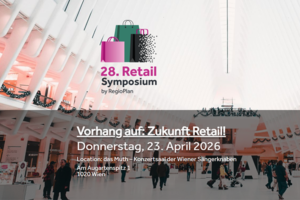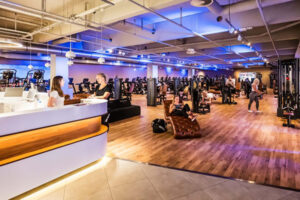ACROSS: HOW DID YOU GET INTO CHRISTMAS LIGHTS?
KLAUS MARK: I carried out the installation of fairy lights during the Christmas season for a small enterprise in Innsbruck. That was my first point of contact with Christmas lights. I liked it, so I founded MK Illumination together with my wife in 1996. Then my brother joined the company. We started locally, winning Tyrolean cities as customers. The first was Wattens, the second Obergurgl.
ACROSS: DID MK ILLUMINATION IMMEDIATELY GROW FAST?
THOMAS MARK: Not at first. We started with a turnover of 110,000 shillings (€7,900). We then grew by 100% per year for 10 years. We generated around €72 million during the last fiscal year, which ended on March 31. This was €10 million more than we were expecting.
ACROSS: WHAT WAS BEHIND THESE UNEXPECTEDLY HIGH SALES?
KLAUS MARK: It was due to multifaceted growth. We saw increases in almost all European countries. We are also growing in almost all the areas in which we operate, not just in shopping malls. That is essential, since that’s the only way we can cushion fluctuations in other sectors. I’m convinced that we can grow massively over the next two years.
ACROSS: THE DEMANDS ON YOUR PRODUCTS ARE INCREASING, RIGHT?
KLAUS MARK: Yes. 20 years ago, after all, there was just one type of string light. Demands for safety and durability have risen in the meantime. It was not until later that we began to focus on design and innovation.
ACROSS: WHAT MALL WAS YOUR FIRST CUSTOMER?
THOMAS MARK: We stumbled into shopping centers, so to speak, from elsewhere, namely hospitality and tourism. That was in 2007. The first shopping center that we had as a direct customer was Fisketorvet in Copenhagen. The first in Austria was Forum in Salzburg; a milestone for us. Europark, also in Salzburg, was to follow. In Germany, Skyline Plaza in Frankfurt was our first major own project. The contract award came to us from the center management. We had already had some shopping malls as customers, for example Wandelhalle in Hamburg.
ACROSS: HOW MANY TIMES CAN A MALL USE A CHRISTMAS DECORATION?
KLAUS MARK: There are a number of answers to that – in Europe it’s an average of seven to 10 years, but occasionally malls decide to use them only three years. In our experience it makes more sense for our clients to take a high quality approach and to make a bigger initial investment in their Christmas lighting. This way they can present something really unique and exciting and use it for a longer period of time. An investment in outstanding and exceptional lighting motifs simply creates so much more attention. Then there is also a chance they will become real landmarks for the Christmas Season. For example, MK Illumination successfully launched the impressive Baobab Tree on Nelson Mandela Square, Johannesburg. The square is connected to Sandton City and together they form the largest retail complex in Africa. This Baobab Tree is a real symbol of the South African bush and represents a truly African Christmas. It became an instant attraction and has evolved into a much-loved meeting point for local people and tourists alike. I’m sure they would miss it, if it was no longer a part of their own unique festive season.
ACROSS: DO MALLS PASS ON THE DECORATIONS TO OTHERS RUN BY THE SAME OPERATOR?
KLAUS MARK: Such central tender approaches do exist. They are doomed to fail miserably in my opinion, however, because the malls—and therefore their Christmas lights—are always unique and location-specific. In addition, a decoration made for Germany, for example, would simply not work in Italy.
ACROSS: HOW ABOUT RENTING?
THOMAS MARK: If you can afford it. Renting models are usually more expensive. Instead, the trend, especially in Central Europe, is to buy high-quality products, use them, as mentioned, for seven to 10 years, and vary them with clever adaptations.
KLAUS MARK: In crisis-ridden Spain, there actually are products that have been passed around for 10 years. Their design and quality is now terrible, with inferior installations. This has budgetary reasons. Operators in England, on the other hand, invest heavily in decoration. That is immediately apparent.
ACROSS: HOW DOES THE INSTALLATION OF CHRISTMAS LIGHTS WORK?
THOMAS MARK: Installation is of course a difficult part of our business process, in part because it takes place simultaneously on all projects. Last year we had 1,600 people in action during the peak period. We benefit from our experience and well-trained team in this.






